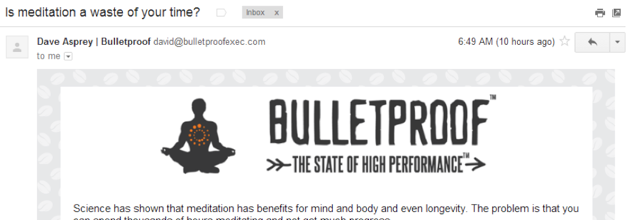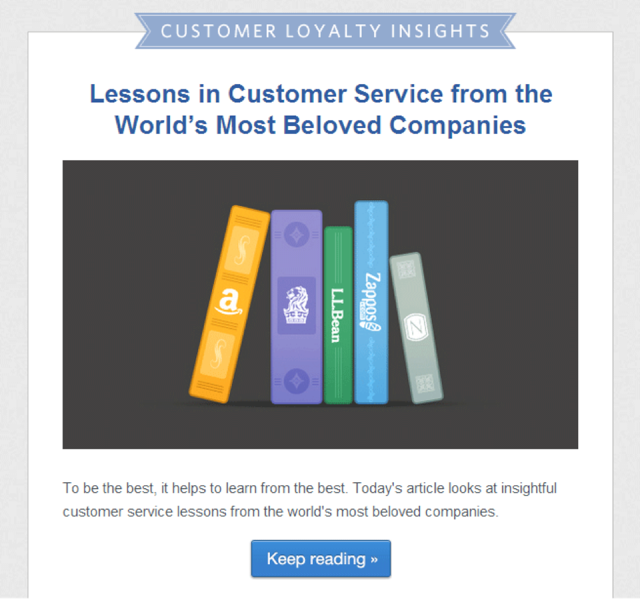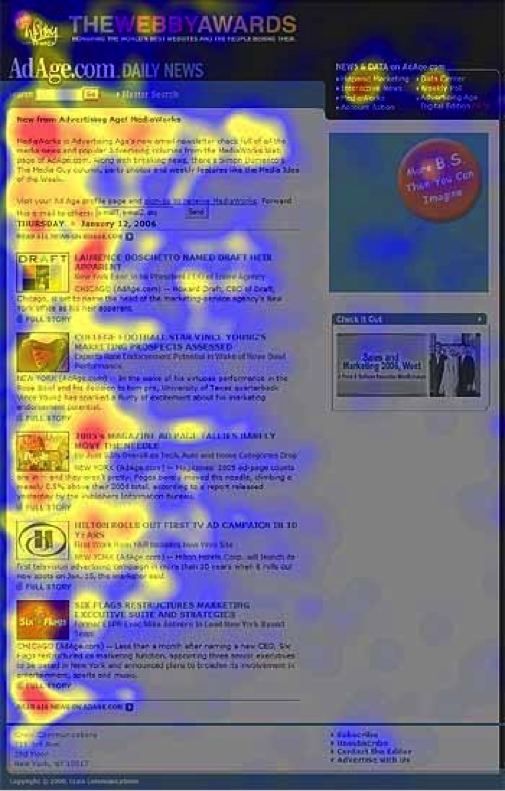The 8 Essential Elements That Make A Perfect Email
-
UncategorizedUpdatedPosted:
On this page
Can you imagine what the perfect email in a perfect world would look like?
As marketers and startup founders, we are always striving to improve our businesses. Some of us pay particularly close attention to email marketing and continually look for ways to increase engagement, drive up clicks and optimize performance.
But have you ever wondered if there is a step-by-step checklist that you can use to ensure every single email you send gives you the best possible chance of attaining your desired results?
To help you on your way, I have put together the eight elements that make the perfect email. Use the tips in this blog post to improve your emails and get better results.
1. Send emails from a person, not a company.
Your audience is bombarded with tons of emails on a daily basis. They are constantly fighting to keep their inbox under control, so as soon as they see an email from someone they neither know nor trust, they will lean towards the delete and spam buttons.
Let’s have a look at an example from Dave Asprey at The Bulletproof Executive:

Dave has done everything right here. I particularly like how he’s included his name and company in the “From” field so that the recipient can quickly identify the sender, as well as the return email address so the recipient knows how to respond directly to Dave. Since a portion of your audience may be relatively new to your business and might not remember you by name just yet, adding the brand will help trigger their memory. I’ve personally had a lot of success with this – particularly with email marketing campaigns and newsletters.
2. Use a personalized subject line.
We all know that the email subject line is incredibly important, but did you know that emails with personalized subject lines are 22.2 percent more likely to be opened?
The best ways to personalize your subject line are to use the recipient’s first name and to address their specific needs. The name part is easy – you can use personalization features inside your email marketing tool to include a first name in the subject.
Personalization based on needs is a little more difficult. For this to work, you’ll first need to segment your email list into groups that are based around similar topics.
For example, let’s pretend I’m sending an email for Vero announcing the latest blog post on 3 misconceptions about email marketing. Instead of sending an email with a generic subject line to all Vero email subscribers, what I’d do is modify the subject line to reflect each person’s specific needs that the blog post would address. Vero might have some email subscribers that are more interested in email marketing basics (Email A), while others may be more interested in specific email marketing growth tactics (Email B). Here’s what the two emails would look like to reflect each of their specific needs and interests.
- Email A: The perfect response to “Email is dying”
- Email B: How to evolve your email to reach Millenials
3. Segment your lists to send more targeted em ails.
Most of us use segmentation with our email and, if you’re not, you should be. Otherwise, you’re missing out on a big opportunity to grow your business and you’re probably annoying a lot of your audience. Other than the obvious facts that people are receiving more and more emails every day and they don’t like receiving emails that aren’t relevant to them, segmentation has been proven to increase engagement. In fact, Mailchimp scanned their system for users who use their list-segmentation feature and sampled about 2,000 users who had sent a total of around 11,000 segmented campaigns to almost 9 million recipients.
Here’s what they found:

You can see that segmentation resulted in significant improvements in both open rates and click-through rates. Lyris, another reputable email service provider, conducted a separate study and found similar results with 39 percent of marketers who segmented their email lists experiencing higher open rates.
So why is segmentation so important?
Justin Premick, the director of education at AWeber, believes marketers should use “smart segmentation tactics to better cater to subscriber interests and needs.”
I agree. I think it really comes down to one core reason: members of your audience are not all the same. They want content that is relevant to their individual interests and needs. For instance, your email subscribers are totally different than your customers. And, your email subscribers that are interested in growth hacking content might be different to email subscribers interested in more general best practice content.
Related: The Awesome Power of Segmentation from HelpScout
4. Include one clear call to action.
Emails are just like landing pages and websites: your audience only has so much attention and your goal should be for them to take a specific action fairly quickly. This means your emails need to have one clear call to action. Don’t bombard your audience with so much information or so many options for action that they become confused or disinterested.
Gregory Ciotti, marketing strategist at Help Scout, knows a lot about what it takes to create a good email. His newsletter at Help Scout regularly reaches 21 percent open rate, which is very good by anyone’s standards.
He says that one of the keys to his success is sticking to his “one email, one goal rule,” wherein each email has only one desired outcome. Let’s look at one of Gregory’s emails now:

As you can see in this email, Gregory uses one very obvious call to action via the giant blue “Keep reading” button. As a reader, you know what action to take if you’re interested in learning more.
Action item: Think about how you can draw inspiration from this design. Can you improve your email engagement by creating a clearer call to action?
5. Well-written email copy should be short, concise and encourage engagement.
The perfect email needs well-written copy. A study by the Nielson group found that, on average, people scan emails in just 51 seconds. As you can see in this email newsletter screenshot that illustrates the eye-tracking results of the Nielsen study, the only areas that get any attention are the initial headline and introductory paragraph:

This poses a challenge for us when we write our emails. How do we write copy that keeps the reader engaged?
I suggest getting to the point of your email pretty quickly. There’s no reason to prolong getting to your main point with trivial wording – especially in the first headline and paragraph.
Looking at the Help Scout example again, we can see that Gregory has cut to the chase with the headline. As a reader, we know exactly what this email is about: “Lessons in Customer Service from the World’s most Beloved Companies.”
6. Personalize emails based on customer data.
According to a study by the National Institute of Health, we like hearing our own names. Our brain’s activity increases when this occurs. You can leverage this ‘increased activity’ to capture and engage your audience via email.
You should already have data on your customers, so implementation requires only an email marketing tool like Vero that gives you the ability to merge in the data based on customer fields. You can start with using first name and company name. As you collect more data from your customers based on their behavior on your website, in your online store or inside their app, you can send even more tailored emails.
Here’s an example of an email campaign based on personalized customer data:

With Vero, you can create dynamic segments so your lists are always up to date. The more accurate your data, the more effective your emails can be.
7. Don’t send ugly emails.
An increasing percentage of your audience is accessing emails on their mobile devices. Litmus recently completed research that found 48 percent of emails are now being opened on mobile. Perhaps more importantly, the study noted that a whopping 69 percent of mobile users delete emails that aren’t optimized for mobile.
This sends a clear message: if your emails aren’t optimized and are unappealing, your audience is going to ignore them. Here are some free resources for beautiful templates that we mentioned in our list of awesome email resources.
Templates
HTML emails aren’t always the right approach, but they will give your messages a beautiful look and feel. There are so many options to choose from, so we are keeping this section. Here are our three favorite places for HTML email templates.
- ThemeForest: There are more than 600 email designs here. They aren’t free, but for between $6 and $20, you can purchase some beautiful designs. Nearly all of these are mobile responsive, but confirm before you buy.
- Campaign Monitor: With more than 100 free templates, this is a gold mine for email marketers. Browse through their designs or download them all right now.
- Mashable curated a handy list of free mobile responsive templates that is quite handy.
Emails are first and foremost supposed to be a way to communicate with your audience. The last thing you want holding back the performance and results of your email is the design.
8. Don’t forget the unsubscribe link.
I use to be guilty of not wanting to include an unsubscribe link in my marketing emails. But over time I’ve realized that you want people to unsubscribe if they don’t get value from your emails. Research by BlueHornet found that 14 percent of consumers unsubscribe from emails because they have grown tired of the brand.
This means they aren’t getting the value or user experience they want from your emails. They aren’t finding your emails interesting, relevant or useful.
If you have paid attention to the other seven elements of a perfect email, you’ll understand when I say that you want these people to unsubscribe. You don’t want to waste their valuable time on emails they are not finding interesting.
Giving subscribers a clear and simple option to unsubscribe benefits you as the sender because it reduces the costs associated with sending email to people who will be delete it straight away. Additionally, this will encourage you keep your emails personalized and only send relevant content to your audience.
Let’s take another look at the email from The Bulletproof Executive and see where Dave has put his unsubscribe link:

I particularly like this because Dave isn’t trying to hide the unsubscribe link in cryptic text at the bottom of the page in some ninja hiding spot. He’s being upfront and genuine, providing a straightforward and easy option to unsubscribe.
The perfect email delivers best-in-class results.
We need to constantly optimize our email marketing to ensure we continue to be successful. As our audience changes their behavior, new technologies emerge and the email inbox becomes harder to penetrate, we as marketers need to implement these eight elements to give ourselves the best opportunity for success.
The best email marketers use these elements. You’ll experience them first hand every day with the emails you receive from various brands, software companies and marketers.
I challenge you to think differently about email. Don’t be satisfied with industry-average open rates and click-through rates. Strive to improve and be best-in-class. Strive to deliver emails that get better results for your business.
Interested in learning more? I recommend these resources:
- The Ultimate Guide to Successful Email Marketing
- How to Turn Your Email Newsletter into a Conversion Machine
- How to Push Send and Grow Your Business
- 21 Best Welcome Email Examples to Engage Customers in 2019
- Promotional Emails: 33 Examples, Ideas, and Best Practices [Updated 2019]
Rock on, email marketers. If you have any questions, feel free to leave them in the comments.
Want to send more personalized mobile and email messages to your users?
Learn moreCustomer story

How Vero helps Dribbble take full advantage of their customer data to improve personalization

